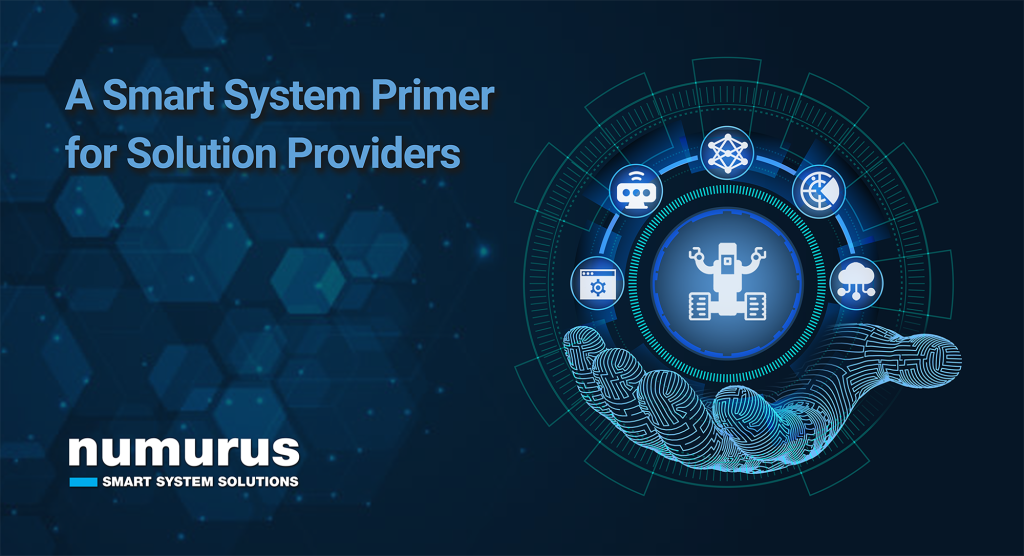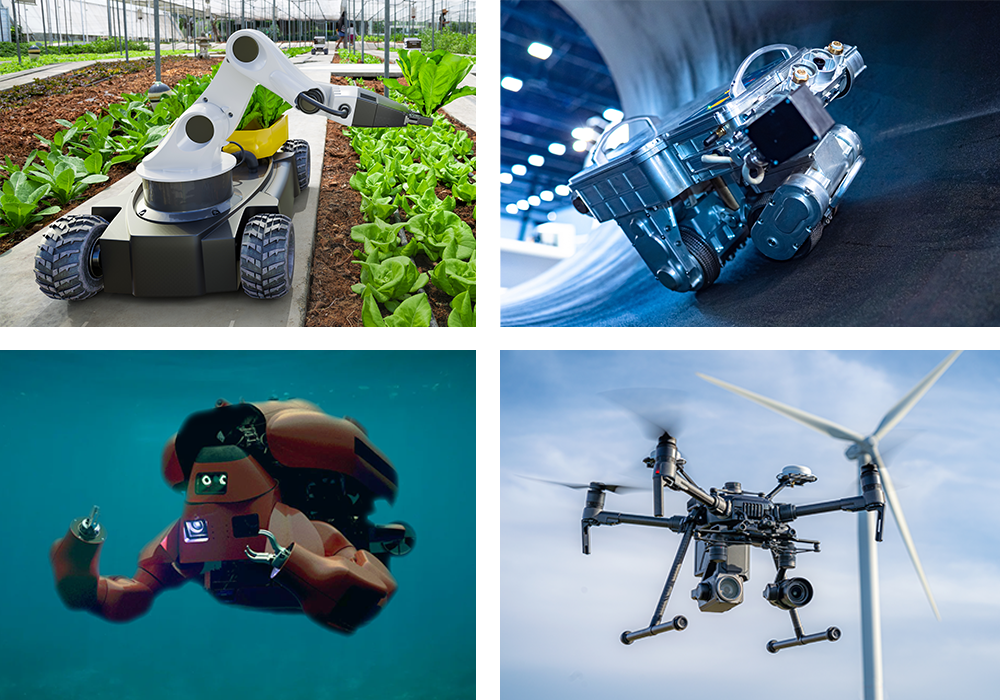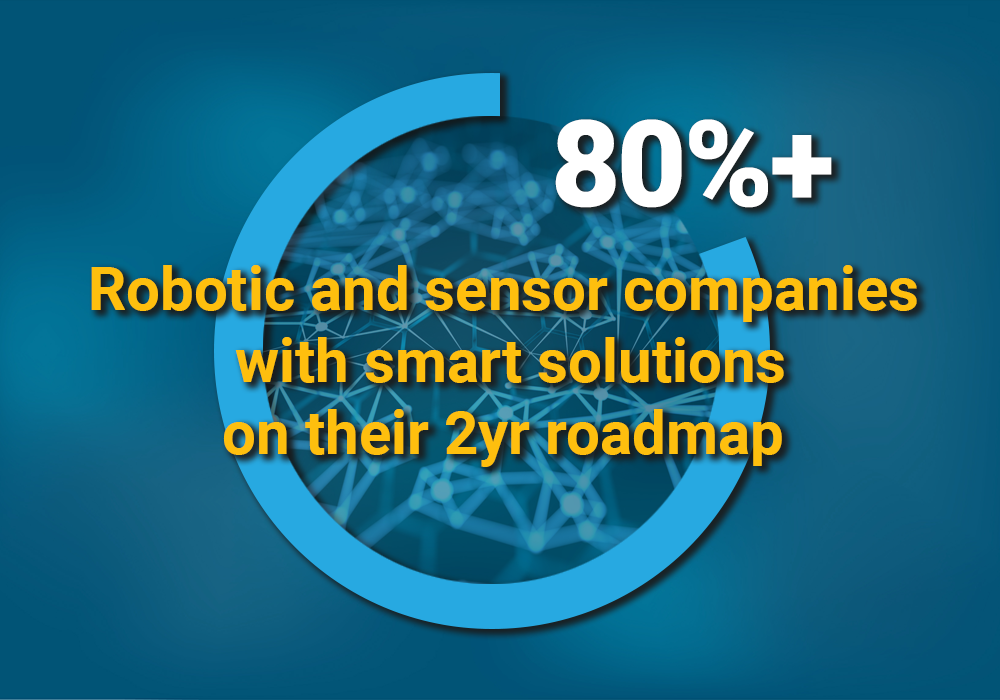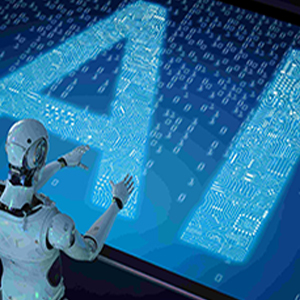
A Smart System Primer for Solution Providers
A Look at the Applications, Drivers, Challenges, and Solutions
INTRODUCTION
The last decade’s investment in industrial automation led to great progress within fixed-process manufacturing and this progress is now moving to the field and anywhere real-time decisions and actions need to be made. Most industry leaders recognize that increased automation and real- time information particularly in operations that are dangerous or expensive for humans to perform, drives efficiency, safety, and stronger top and bottom-line revenue. A recent example of this is the pandemic that motivated many asset operators to increase the deployment of smart devices to ensure operational continuity. In the article Industrial Automation: Transforming the Way You Do Business, the author clearly states, “the demand to automate has never been greater.”1
As a result, there is increased pressure on sensor and robot solution providers to modernize their product lines and support their customers. This white paper provides useful information and insights for anyone in a leadership role who wants to add smart technologies and more automation to their products.
SMART SYSTEMS ENABLE IN-FIELD INDUSTRIAL AUTOMATION
Automation is moving to the field and anywhere real- time decisions are needed due to the emergence of new smart technologies like artificial intelligence, edge processing and mobile robotic platforms. These smart technologies provide greater flexibility, responsiveness, adaptability and connectivity at the edge, which are needed for automation in unstructured environments. Smart systems are applicable to a broad range of robotic applications including operations monitoring and inspection and maintenance.

As the demand of robotics for industrial inspection and maintenance grows, a new generation of smart products is required to increase adoption and use across a wider landscape of applications. Traditional inspection and maintenance operations involve human interaction at all stages of the process including data collection, analysis, and distribution. Robotic-based inspection systems require more automation at each of these stages. By integrating and interfacing sensors, edge processing, artificial intelligence, automation scripts, and cloud connectivity together into deployable products, today’s smart systems can be rapidly created and deliver even more automation.
SMART SYSTEM IN-FIELD APPLICATIONS
Smart Inspection Systems
![]() Sensors often collect inspection data over days and weeks which produces an unmanageable volume of data for manual review and frequently results in visually missing a defect or low-quality issue. This omission is often a costly, but common mistake. Smart inspection solutions, with integrated AI detection and collection automation features, ensure this issue is much less likely to occur.
Sensors often collect inspection data over days and weeks which produces an unmanageable volume of data for manual review and frequently results in visually missing a defect or low-quality issue. This omission is often a costly, but common mistake. Smart inspection solutions, with integrated AI detection and collection automation features, ensure this issue is much less likely to occur.
Smart Perception Systems
![]() Mobile robotic systems need to accurately detect, classify, and localize the physical environment around them so they can navigate complex environments or manipulate random objects. Smart perception solutions with integrated AI and automated targeting help mobile robotic systems navigate and manipulate objects with much greater accuracy and precision.
Mobile robotic systems need to accurately detect, classify, and localize the physical environment around them so they can navigate complex environments or manipulate random objects. Smart perception solutions with integrated AI and automated targeting help mobile robotic systems navigate and manipulate objects with much greater accuracy and precision.
Smart Data Collection Systems
![]() Data is at the heart of industrial automation but traditional methods used to collect, transfer and sort large amounts of field data is costly, time intensive, and not sustainable. Smart data collection solutions with integrated AI and collection automation algorithms lower costs, reduce human touchpoints and decrease pipeline demand because they only collect and transfer valuable data to remote cloud servers.
Data is at the heart of industrial automation but traditional methods used to collect, transfer and sort large amounts of field data is costly, time intensive, and not sustainable. Smart data collection solutions with integrated AI and collection automation algorithms lower costs, reduce human touchpoints and decrease pipeline demand because they only collect and transfer valuable data to remote cloud servers.
Smart Monitoring Solutions
![]() While many companies leverage networks of cloud connected sensors to monitor fixed factory processes and equipment, most companies still depend on manual inspection processes and delayed information in the field. Smart monitoring solutions with integrated AI and alert automation algorithms now provide organizations with near real-time critical operations information from anywhere in the world.
While many companies leverage networks of cloud connected sensors to monitor fixed factory processes and equipment, most companies still depend on manual inspection processes and delayed information in the field. Smart monitoring solutions with integrated AI and alert automation algorithms now provide organizations with near real-time critical operations information from anywhere in the world.
WHY SOLUTION PROVIDERS ARE INVESTING IN SMART SYSTEM DEVELOPMENT
Smart technologies have moved from a nice-to-have feature to a necessity for solution providers who want to support growing customer demand. A study by IMARC Group reports the global smart robot market size reached US $10.6 billion in 2022 and is expected to reach $28.3 billion by 2028, exhibiting a growth rate (CAGR) of 17.7% during 2023-2028.2 Also, a study by Acumen Research and Consulting reports the global smart sensor market size is projected to achieve a market size of US $156.4 billion by 2030 rising at a CAGR of 20.1% from 2022 to 2030.3

With this magnitude of growth, it is no surprise that solution providers are pre-positioning for market share by putting smart system upgrades in their product roadmap. Numurus estimates that 80% of robot and sensor companies have smart solution upgrades on their 2-year roadmap. There are many more reasons why solution providers like sensor and robot developers should invest in smart systems:
 Meet Industry Demand for Automation
Meet Industry Demand for Automation
As end customers move forward with their industrial automation projects, they want to integrate new capabilities that support their automation goals. Smart technologies have become an end customer requirement instead of an optional feature.
 Deliver Continuous Product Innovation
Deliver Continuous Product Innovation
Most sensor and robotic products were built for manual, human-in-the-loop operations. While based on solid underlying technologies that met the initial end-customer needs, these products must integrate modern capabilities to stay current. You must adapt and provide this or risk market loss.
 Enable Industrial Transformation
Enable Industrial Transformation
Supplying smart robots and sensors to your customers makes you become a key technology provider to help them disrupt markets and enable industrial transformation.
 Beat The Competition
Beat The Competition
The rapid growth of AI and automation in industrial settings has created a capacity race between competing vendors. In the rapidly evolving transformation those who can add capacity to support smart systems upgrades will meet customer demand, beat the competition, and flourish.
In summary, solution providers who invest in smart systems will stay relevant and attract more customers thus taking part in the global market growth.
WHAT ARE SMART SYSTEMS?
Smart systems combine sensing, data localization, analytics, artificial intelligence, communications, and mobility to provide more advanced automation and less dependency on human-in-the-loop. In the white paper AI at the Edge, the author states that Artificial Intelligence (AI) enabled smart solution solutions have the ability to mimic

human intelligence as characterized by behaviors such as sensing, learning, understanding, decision-making, and acting, all of which are required for automated decision making in the field.4 The European Technology Platform on Smart Systems Integration states that smart systems increasingly sense their surroundings, operate autonomously and collaborate with other smart systems.5 In general, smart systems typically have these core capabilities:
 Multimodal Sensing and Localization
Multimodal Sensing and Localization
Smart systems are able to gather information from a combination of integrated and external
sensor inputs and create robust actionable information from that data. This is called multi modal sensor technology and most smart systems should also convert diverse sensor data to standard formats to ensure maximum compatibility with downstream consumers. Smart systems need to combine data from built-in and external sensor data to properly localize information relative to the sensor within a three-dimensional environment and also to provide global location details about the information produced.
 Information Processing
Information Processing
Smart systems manage a sophisticated on-board information processing pipeline to rapidly adapt to changing operational and situational requirements. These changes can include switching from a search to an inspection mode of operation or adapting to environmental conditions such as fog or turbidity. AI detection management allows smart systems to switch between AI models stored in an onboard AI model library.
 Automation
Automation
Automation management capabilities allow smart systems to monitor and act on information at the edge, providing rations more efficient and safer specific operations such as switching onboard AI models or collecting data in a specific location or around specific targets of interest further reducing the amount of data and information stored or streamed off-board.
 Real-Time Information Distribution
Real-Time Information Distribution
Smart systems must support information and control flow across several types of simultaneous communication interfaces with downstream information consumers such as local personnel, robotic control systems, and remote operation centers. This is much different from the one-to-one single-layer interfaces provided by traditional sensors.
CHALLENGES OF BUILDING SMART SYSTEMS
Smart solutions require the orchestration and ongoing support of many new, complicated technologies, like advanced sensor drivers, EdgeAI management tools, AI modeling, remote user interfaces, Internet-of-Things (IoT), robot platform interfaces like robot operating system (ROS), and additional specialized technologies all integrated into a complete solution. CompTIA reports that AI projects alone typically take anywhere from three to 36 months depending on the scope and complexity of the use case.6 Another market analysis by Mckinsey states that the value of AI is not to be found in the models themselves, but in companies’ abilities to harness them.7

There are many challenges to consider before modernizing your products. Without thoughtful consideration, these challenges can have a big impact on your speed and cost to market.
 Smart Solutions are Complex
Smart Solutions are Complex
Smart solutions require the orchestration and ongoing support of many new and disparate technologies, like advanced sensor drivers, Edge-AI management tools, remote user interfaces, Internet of-Things (IOT) communications, Robot Operating System (ROS) interfaces, and additional specialized technologies all integrated into a seamless solution. You will need a lot of specialized labor to build the libraries and create the interfaces to accomplish your goals.
 Hard to Find Technical Expertise
Hard to Find Technical Expertise
You need engineers and software developers with deep, specialized knowledge and experience in a variety of cutting-edge technologies to build libraries, create interfaces and integrate these smart technologies. How will you develop and maintain all of the knowledge needed in-house while also being focused on your core product?
 Overloaded In-House Development Teams
Overloaded In-House Development Teams
Does your staff have the bandwidth to take on a new major product development with unfamiliar technologies? When you build low-level solutions in house, there is extra burden and stress on the whole team. Most engineers are maxed out with core projects. Already highly utilized, reluctant staff can stifle smart product progress.
 Short Timelines and Tight Budgets
Short Timelines and Tight Budgets
Your end customers need smart solutions today, and you need to deliver them faster than what your current resource planning can deliver. Yet to hire an entire team to develop and support the solution you may need a longer timeline and a bigger budget.
HOW TO ACCELERATE SMART SYSTEM DEVELOPMENT

A complete smart system requires the combination of many hardware, software, and cloud technologies. Most of these are necessary but non-differentiating, consume extensive resources to build, and are just foundational components to reach your ultimate solution. A key factor in accelerating smart system software development is determining which technology components are best built in-house versus leveraging commercial development platforms and outside resources.
 Leverage Available Software Development Platforms
Leverage Available Software Development Platforms
Developing full-stack hardware from the ground up requires a lot of time and resources. Particularly in the robotics field, there are very smart and capable engineering teams that can do it all. But the question leaders need to ask is what should our in-house teams be building from scratch, and what other options are there for everything else? Armed with this roadmap, companies should aggressively look for third-party software, hardware, and services for everything else. Commercially available software development platforms provide well-developed and implemented architectures, example solutions, great technical support, and usually come at a fraction of the cost of solutions developed in-house.
 Find and Buy Turnkey, Off-the-Shelf Hardware Solutions
Find and Buy Turnkey, Off-the-Shelf Hardware Solutions
If you buy hardware solutions it usually comes at a higher per system price then building the same solutions in-house, but the dollars saved in a build don’t overcome the time and revenue lost due to the competition getting to the market faster. You should wait until after competitors launch their product and gain some market traction with turnkey, off-the-shelf hardware before investing in the per-system margin savings of in-house-built hardware.
 Use Experienced Partners for Non-Core Technology Development
Use Experienced Partners for Non-Core Technology Development
Your end-customer chooses products because of some core technology or capability you do best. You can keep your team focused on your core technology improvements, and find subject matter expert partners like Numurus that can support the nuts and bolts of smart solution development efforts.
The ultimate goal of these accelerators is to simplify technology development in areas that are not core nor differentiating to your business. Over the last few years, several companies have brought commercial solutions to the market that simplify smart technology development and use, including Numurus with its NEPI AI and automation software, a full-featured software development platform for embedded AI and automation processing hardware. NEPI installs on top of the base operating system provided by chip manufacturers to create a feature-rich environment for creating edge-AI and robotic automation solutions in days, not months.
WHO CAN BENEFIT?
Any organization developing robotic, smart sensing, or Edge-AI solutions for in-field automation activities should consider leveraging the project acceleration techniques highlighted in the previous section. This includes sensor, robotic, and AI solution developers, universities, and other research organizations. The key benefits for organizations adopting these techniques include lower development costs, reduced project risks, and the ability to get solutions to market faster.
Smart Inspection Systems
 The full spectrum of sensor types (sight sound, pressure, distance, temperature and more) are capable of being upgraded to smart systems. Sensor technology companies can rapidly integrate AI, automation, and IoT features into their products and get ahead of their competition by leveraging turnkey smart software.
The full spectrum of sensor types (sight sound, pressure, distance, temperature and more) are capable of being upgraded to smart systems. Sensor technology companies can rapidly integrate AI, automation, and IoT features into their products and get ahead of their competition by leveraging turnkey smart software.
Robotic Solution Providers
 Robotic solution providers across all domains, from the sea floor to the air, can quickly add smart perception capabilities to their solutions. Your end customers can benefit by receiving only high-value data to support decision-making at local and remote downstream operations centers while at the same time decreasing irrelevant data in the resource-constrained pipeline.
Robotic solution providers across all domains, from the sea floor to the air, can quickly add smart perception capabilities to their solutions. Your end customers can benefit by receiving only high-value data to support decision-making at local and remote downstream operations centers while at the same time decreasing irrelevant data in the resource-constrained pipeline.
AI Solution Developers
 AI solution developers and their customers easily deploy and run AI models on the Edge with a suite of AI life-cycle management capabilities. This can help AI solution developers focus on AI training models, simulation and product development instead of middleware.
AI solution developers and their customers easily deploy and run AI models on the Edge with a suite of AI life-cycle management capabilities. This can help AI solution developers focus on AI training models, simulation and product development instead of middleware.
Research Organizations

By using turnkey smart system middleware research organizations can help their teams stay focused on the higher research objectives, like improving ROV command and control, propulsion, system reliability, weight or any other research objective and not be weighed down by building low-level middleware software.
CONCLUSION
The manufacturing process improvements of the last decade are moving to in-field automation and anywhere real-time decisions need to be made. Smart system technologies play a vital role in enabling these improvements because they provide greater flexibility, responsiveness, adaptability and connectivity at the edge, which ultimately delivers better data and end-customer decisions.
In the past you had no choice but to design GPU hardware solutions, customize operating systems, and build low-level middleware for your smart projects in-house because there wasn’t a commercial solution. Numurus can fill this technology gap with a suite of turnkey industrial automation products and services that include smart system software platforms, turnkey edgecompute hardware solutions, and smart system professional engineering services.
Those who take the step forward and upgrade their products with commercial, turnkey middleware can capture new markets quickly and have a sense of accomplishment knowing they’ve helped their end customers achieve their vision in record-time.
ABOUT THE AUTHOR
 Jason Seawall CEO at Numurus LLC
Jason Seawall CEO at Numurus LLC
Jason Seawall is an expert in the fields of advanced automation, robotics and sensing drawing upon over 20 years of experience. Jason was a research engineer at both the Applied Research Laboratory in Texas and the Applied Physics Laboratory in Washington working on robotic sensors for defense applications. He founded and sold BlueView, a marine robotic sensor company to Teledyne in 2012 and took the role of VP of Technology in Teledyne’s marine robotics and sensing division. In 2017, Jason co-founded Numurus to focus on products that accelerate the development of autonomous robotic systems.
Contact
Want to learn more about Numurus and Smart System Solutions? Please contact us:
 info@numurus.com
info@numurus.com
 www.numurus.com
www.numurus.com
 Linkedin/numurus
Linkedin/numurus

1 G2 Community, Industrial Automation: Transforming the Way You Do Business, Heather Scurti July, 2021. 2 IMARC Group, Smart Robot Market: Global Industry Trends, Share, Size, Growth, Opportunity and Forecast 2023-2028. 3 Acumen Research and Consulting, Smart Sensor Market Size – Global Industry, Share, Analysis, Trends and Forecast 2022 – 2030, October, 2022. 4 The European Technology Platform on Smart Systems Integration White Paper: AI at the Edge. Page 6. 5 The European Technology Platform on Smart Systems Integration. 6 CompTIA. Artificial Intelligence in Business. Top Considerations Before Implementing AI. 7 McKinsey. Driving Impact at Scale from Automation and AI. February, 2019. Page 11. 8 Harvard Business Review, A Smarter Strategy for Building Robots, April 2023. Ben Armstrong and Julie Shaw.
© 2023 Numurus LLC

